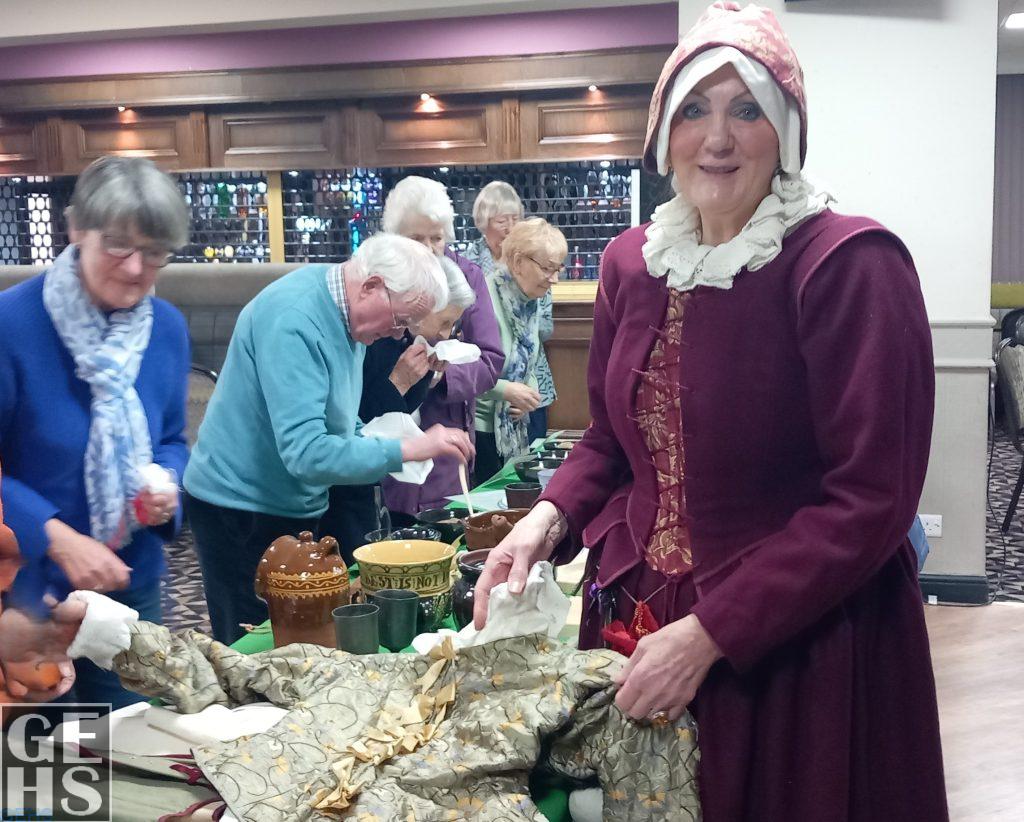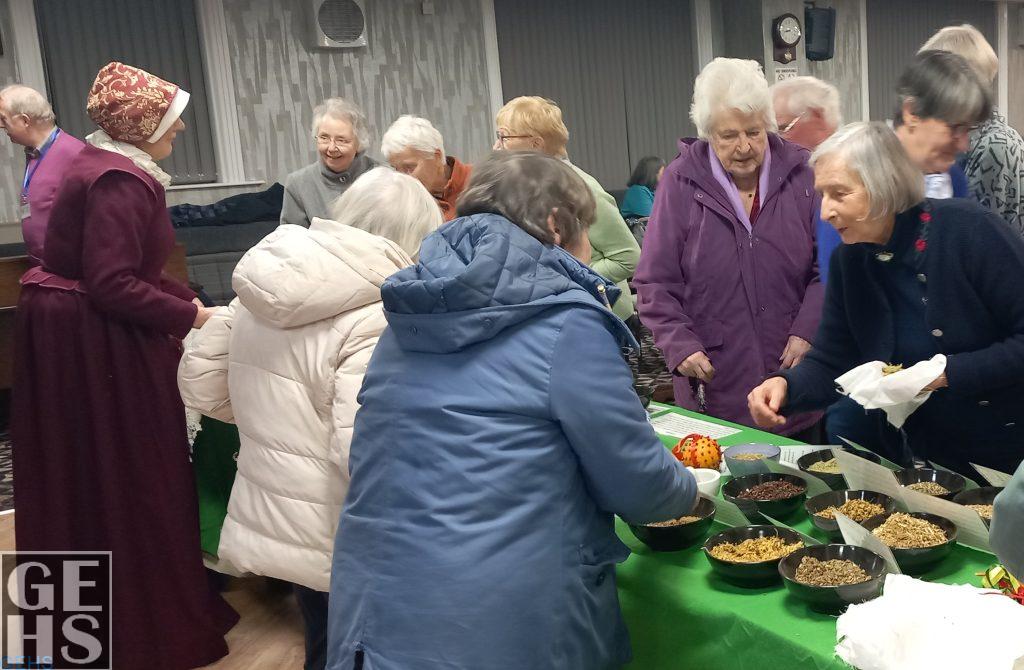Members Meeting 12th February 2025
Robina Hodgson – A Tudor Lady in Costume, Herbs and More
Nearly 50 members of the Society were pleased to welcome the return of Robina Hodgson. At her last visit, Robina gave a talk on the Home Front. This time, Robina came dressed in clothes which would have been worn by a typical middle class lady in the 16th century, typical of those that would have been worn by the family at places such as Shibden Hall.
Robina went on to describe, and to show, the various items of clothes a lady would have worn in the period and the laws which dictated which colours she could and could not wear. No crimson or gold. No ermine or velvet. These were only allowed if you were of noble standing.
Robina continued to give details of the marriage and the duties of the lady of the household. In Tudor times the legal age for marriage was 12 years for a girl and 14 years for a boy. Although they could legally be married at that age it was more likely that they were betrothed rather than married. Arranged marriages between families involved a dowry and were dealt with in a business like fashion.
A wife’s duty was to look after the house. She had to be capable of carrying out all duties that she would ask her household staff to carry out.
She was also expected to have children. It was not unusual at the time for many women to have died whilst in childbirth. 25% of the children born were not expected to be expected to reach the age of 1. There was still a significant mortality rate up to the age of 5. The life expectancy of some one living at the time was 40 years of age.
Herbs were wildly used in Tudor times. It was not unusual for the household to be infested with fleas, vermin or other nasties. Herbs were used to try and eradicate the infestations and to also perfume the house.
Mattresses at the time were stuffed with straw. A welcome home for fleas. Lavender and Woodruff were used to combat these. What did they use to get rid of the mice and rats? A cat! with maybe the help of a mousetrap or two, aniseed or arsenic.
Plates and cups were made of pewter with a lead base. It was accepted that a cup would be passed around. Water was not drunk but, instead, beer or ale.
Salt was a very important commodity. The importance of a person was indicated by where they were positioned when sat at the table. Those of greater importance were sat closer to the master of the house and above the position of the salt on the table.
After the presentation members were invited to examine the items brought by Robina and to take a muslin cloth and a selection of herbs to make their own sachet/bouquet garni.
Members thoroughly enjoyed the evening. Hopefully Robina will return again sometime in the future.

